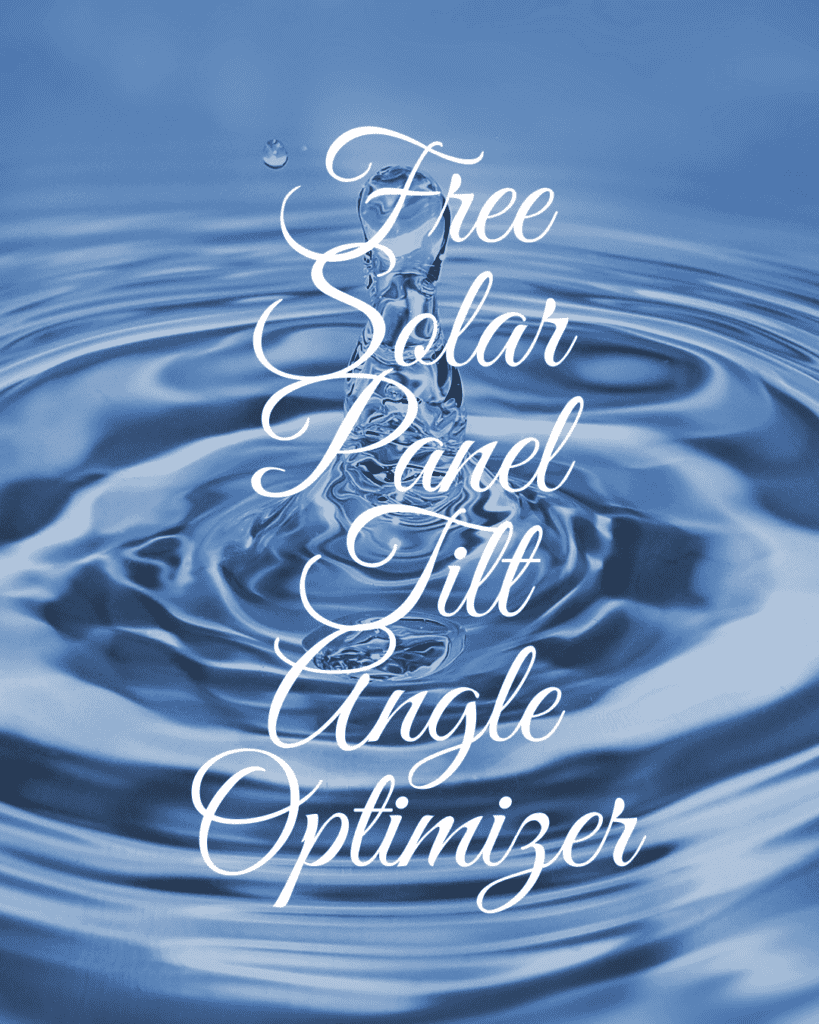Solar Panel Tilt Angle Optimizer
Free Solar Panel Tilt Angle Optimizer
No matter if you are investing tens of thousands or millions, properly aligned solar panels will maximize energy output and financial return. Optimized tilt angles increase electricity production while decreasing costs, decreasing environmental footprints and mitigating environmental concerns.

Your solar panel tilt angle depends heavily on its geographical position. Understanding this impactful variable is key to making sure you maximize the effectiveness of your system.
Optimal Tilt Angle for Your Location
Your solar panel system tilt angle depends on your location’s latitude. To find it, search Google or look at a map. Remember, how far your latitude is from the equator determines whether or not you fall under Northern or Southern Hemisphere jurisdiction; if your latitude ends in N, panels should face south; otherwise if S, panels should face north.
Climate and local weather patterns will play an integral part in how you adjust your panels for maximum energy production throughout the year. For instance, areas prone to snow should use steeper angles during winter to minimize build-up that might block sunlight.
Utilizing an online solar calculator or tool such as the Solar Panel Tilt Angle Optimizer, you can determine the ideal tilt angle for your specific location and season. This tool will assist in finding a balanced tilt angle based on latitude for year-round efficiency, before suggesting various tilt angles depending on which season it is currently.
Example: If you live at latitude 41deg N, this tool recommends tilting solar panels at 40deg towards south for optimal performance. Furthermore, summer solar panel tilt angles should be steeper to capture more sun at lower solar zenith angles while in winter they should be shallower in order to maximize energy production during a colder season.
The tool will also assist in avoiding shading issues, which can significantly reduce solar energy production. For instance, it will alert you of nearby trees or buildings which could cast shadows onto your solar panels and reduce output. If this becomes an issue for you, shade-reducer planting could be necessary, or alternatively consider installing a tracking system which follows the sun throughout the day; although installing one might require more complex hardware and installation costs but can produce significantly more long-term energy production than fixed solar panel systems.
Optimal Tilt Angle for Winter
Solar energy has quickly become an integral component of modern life as people look for ways to lower electricity costs and minimize environmental impacts from fossil fuels. Unfortunately, many homeowners remain unaware that how their solar panels are tilted can have an enormous effect on how much energy is generated by each panel – it plays a pivotal role when selecting which type of system to install or upgrade; tilting is of equal importance no matter whether installing panels on a home, business, or community building – getting the proper tilt angle can significantly boost energy production!
Solar Panel Tilt Calculator
Most homeowners and business owners know that solar panels must be aligned perpendicular to the sun, but many may be unaware that this position varies throughout the year due to Earth rotation and seasonal variations; hence the optimal tilt for solar panels differs during winter and summer compared to any other time of year.
Books and articles often recommend setting your solar panel’s tilt angle equal to your latitude plus 15 degrees during winter and subtract 15 degrees during summer; this approach works fine for most locations but a tool which automatically calculates an optimal tilt angle will likely work even better for each time of year and month.
To solve this problem, we created an online calculator that makes determining the ideal tilt angle easier than ever before. Simply enter your address or zip code, and the software will determine your optimum tilt angle based on time of year, day of month, season of the year as well as current tilt angle for solar panel installation and optimal tilt angles during each month and season of the year. It even tells you your current solar panel tilt angle along with any optimal ones you should aim for in future months and seasons!

This tool is completely free and available to any individual or business looking to maximize their solar energy production. Homeowners and businesses considering solar can use the tool to select an appropriate system type; professionals installing systems can make clients aware that precise panel placement has an effect on overall production.
Optimal Tilt Angle for Summer
Solar panels capture sunlight to generate electricity, leading to greater power output and consequently lower electricity bills and potential investment returns for homeowners. One factor affecting production is tilt; an optimal tilt angle will maximize energy generation by responding to changes in sun’s position over the seasons and ensure maximum power production from each solar panel.
Typically, solar panel tilt angles should equal their latitudes; however, for optimal energy production it may be beneficial to adjust them seasonally. A solar technician or online calculators are available to assist with optimizing energy production.
As the sun is highest in the sky during summer, your panels should be tilted at about 20 degrees steeper than your latitude to maximize solar rays reaching them more directly and generate power at an angle closer to 40 degrees if your home’s roof faces east or west.
An ideal solar setup should be flat, yet a slight tilt of between 5-6 degrees yields maximum energy production by spending more time facing towards the sun. Furthermore, its slight tilt helps snow, leaves and debris slide off more easily – SETO’s San Diego example shows this to be true as west-facing systems at 6 degree tilt lose 15% production when compared with south facing ones at the same tilt angle.
As the sun’s height in the sky varies with season, using a simple formula to calculate an ideal tilt angle for solar panels is impossible. Instead, researchers have created a multidisciplinary approach to predict which tilt angles would provide maximum efficiency at specific times of day and season. They began with Taguchi experimental methods before adding factors to account for curvature of earth, atmospheric conditions and sun’s position in sky; ultimately creating a nonlinear model capable of accurately predicting effective tilt angles for any location with any roof orientation and slope combination possible.
Optimal Tilt Angle for Fall
As the sun moves lower in the sky during fall, tilting solar panels at steeper angles to maximize sunlight exposure and produce more energy is an ideal strategy to optimize their production. While your ideal tilt angle depends on where you live – for those in Southern California it can range anywhere between 19 degrees in summer to 49 degrees during winter; you can determine your ideal tilt angle by determining your latitude then making necessary adjustments according to seasonal variations as mentioned above.
Solar Panel Tilt Angle Optimization Optimized tilt angle positioning of solar PV modules is key to both maximizing energy production and maintaining system performance over time. Even minor variations in tilt angle can have a substantial effect on yield – even minor shifts may decrease it by as much as 4 percent each year!p

To avoid this scenario, it is essential to optimize tilt angles on a regular basis with an optimal tilt calculator. This free online tool enables users to enter their address and generate optimal tilt angles for every season and year-average values.
To determine the optimal tilt angle, it is important to take into account various factors:
Process Workflow The purpose of this research study is to calculate and collect information pertaining to:
Solar geometric parameters will include declination angle (d), apparent solar time (AST), equation of time (ET), hour angle (h), solar altitude angle b 1; solar azimuth angle a 1 and collector angle th. We will compare our calculated optimal tilt angle with those provided by GSA 2.3 as well as four isotropic sky radiation models such as Liu and Jordan model, Koronakis model, Badescu model and Tian model.
Results of this research demonstrate that our PV modules achieve an optimum tilt angle that closely resembles that suggested by GSA 2.3, with four isotropic model tilt angles showing great agreement among themselves and providing greater annual gains in solar power output than that provided by GSA 2.3.
